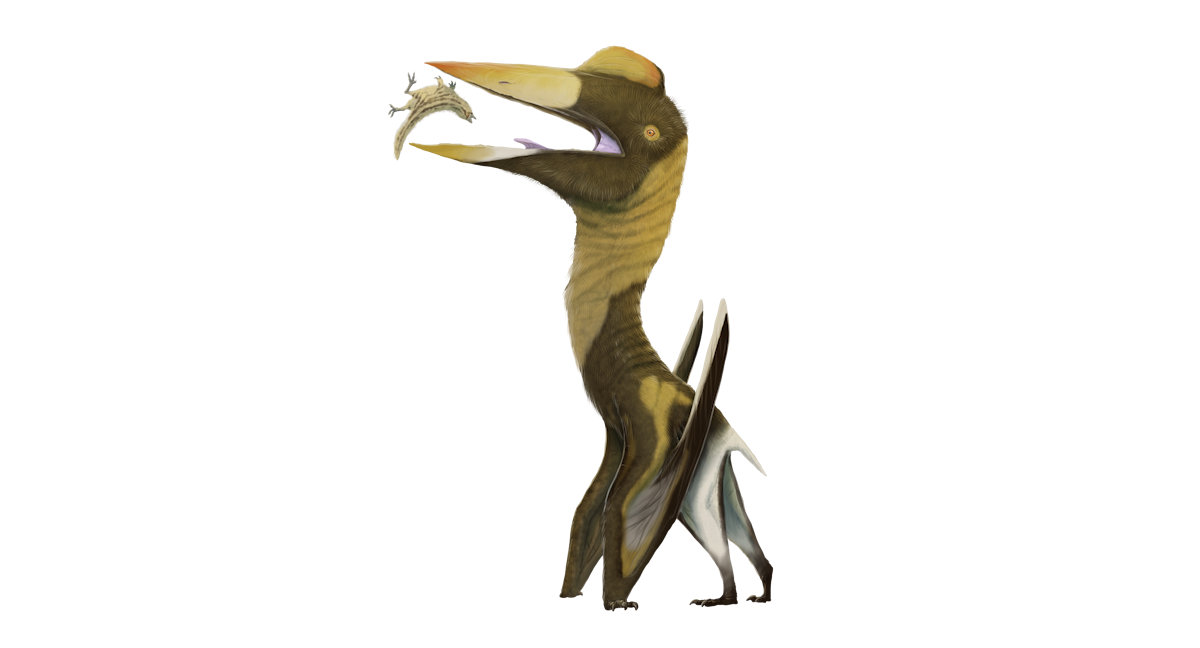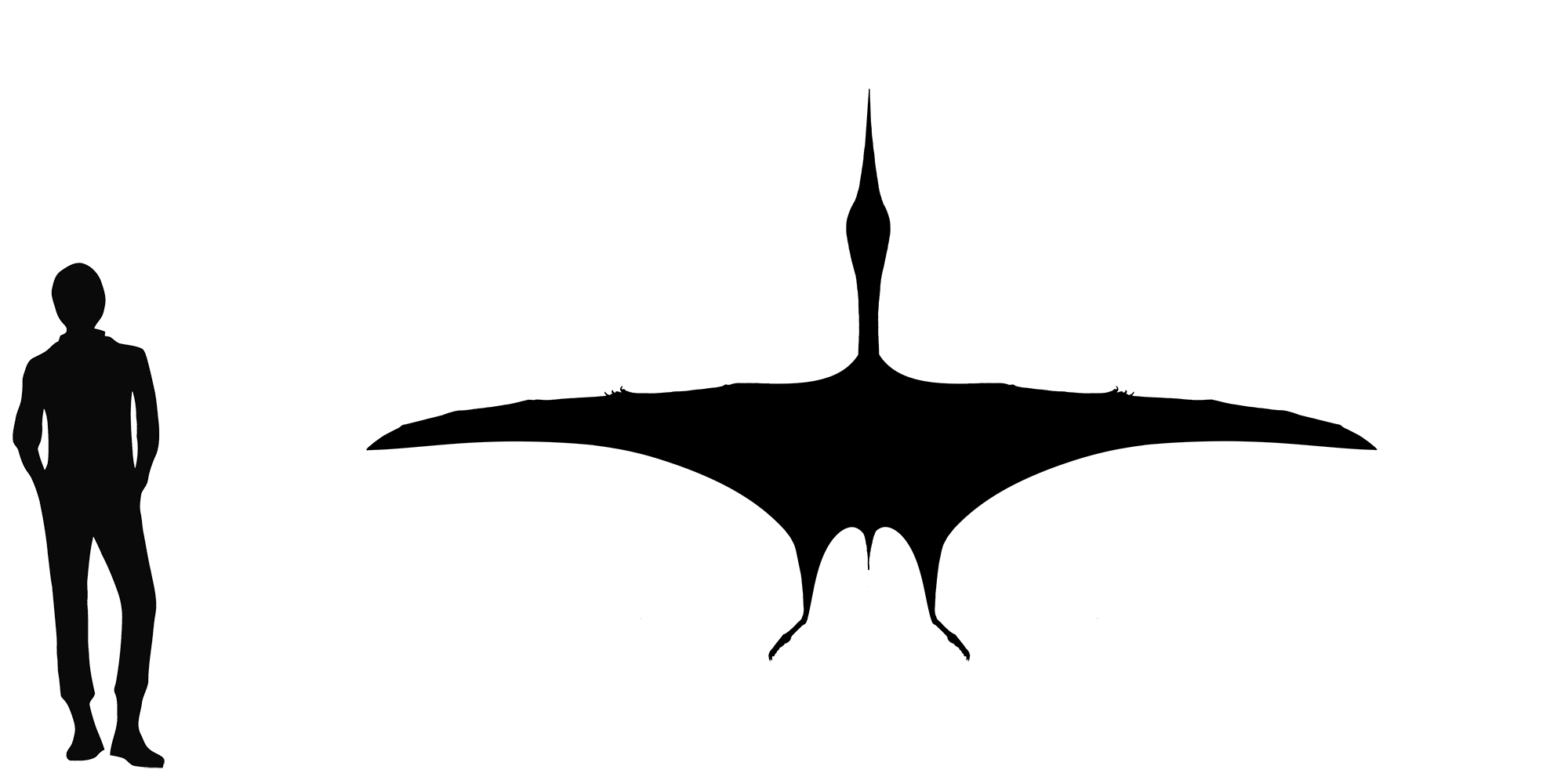Montanazhdarcho



The Upper Cretaceous Two Medicine Formation of western Montana and Alberta is well known for its diverse dinosaur fauna, including the famous “good mother lizard” Maiasaura. In addition to the dinosaurs, the Two Medicine Formation preserves at least one pterosaur taxon, known as Montanazhdarco minor.
Montanazhdarcho was discovered in the early 1990s and first named and described in 1993 by Kevin Padian, Armand de Ricqlès, and Jack Horner. The only known specimen was discovered in rocks found in the Blackfoot Nation in Glacier County, Montana and were deposited about 74 million years ago. The specimen is made up of a portion of the mandible, most of the left wing and a partial left shoulder, a partial right wing and most of the right shoulder, and some neck vertebrae. When complete, Montanazhdarcho had a wingspan of approximately 2.5 meters (8 feet). Detailed examination of the microstructure of the bones indicates that the specimen was fully grown.
Montanazhdarcho is named for the state of Montana and is an allusion to the pterosaur genus Azhdarcho, thought to be a close relative. The species name, minor, indicates its small size compared to other azhdarchids known at the time, like the giraffe-sized Quetzalcoatlus of Texas. When first described, Montanazhdarcho was placed in the pterosaur family Azharchidae as it shares many anatomical features with that group in the neck vertebrae, shoulder, and humerus.
A more recent analysis presented by Nathan Carroll at the 2015 annual meeting of the Society of Vertebrate Paleontology proposed a different placement. He noted that most of the characteristics listed by Padian and colleagues are found in a larger group known as the Azhdarchoidea which includes the azhdarchids as well as the tapejarids and thalassodromids. In fact, Carroll noted that Montanazhdarcho shares many anatomical details of the shoulder, humerus, and the ratio of the bones in the wing finger with the tapejarids and thalassodromids and may in fact be closer to those families and not an azhdarchid at all.
Like all azhdarchoids, Montanazhdarcho was carnivorous. Azhdarchids like Quetzalcoatlus and Hatzegopteryx have been interpreted as terrestrial predators of small dinosaurs, lizards, and mammals, and the tapejarids and thalassodromids were likely similar in their habits although may have eaten fish or foraged for seeds as well. The environment of the Two Medicine Formation was a forested upland crossed by numerous rivers and dotted with several small lakes, an environment perfect for hunting small terrestrial prey.
2.5 m (8.2 ft)



